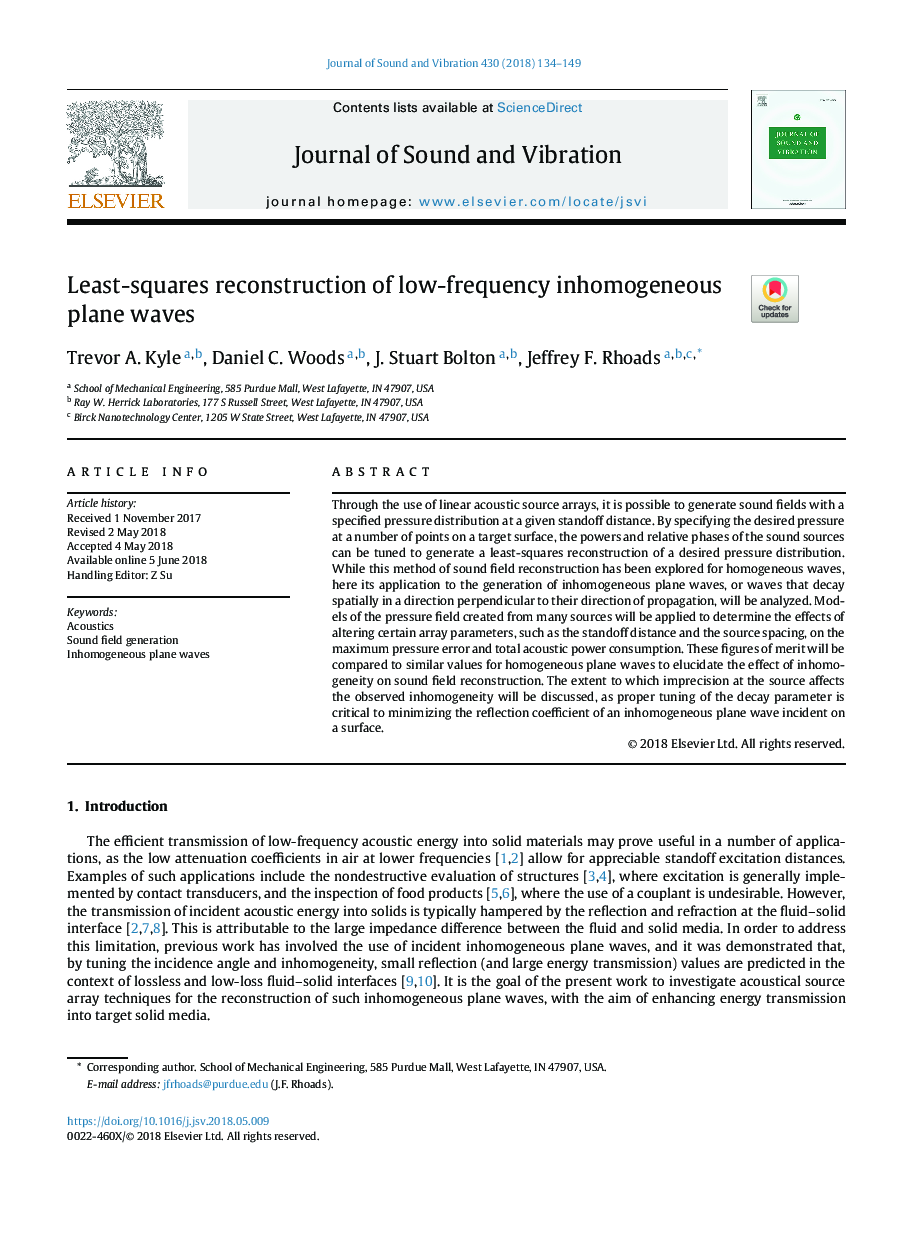| Article ID | Journal | Published Year | Pages | File Type |
|---|---|---|---|---|
| 6752867 | Journal of Sound and Vibration | 2018 | 16 Pages |
Abstract
Through the use of linear acoustic source arrays, it is possible to generate sound fields with a specified pressure distribution at a given standoff distance. By specifying the desired pressure at a number of points on a target surface, the powers and relative phases of the sound sources can be tuned to generate a least-squares reconstruction of a desired pressure distribution. While this method of sound field reconstruction has been explored for homogeneous waves, here its application to the generation of inhomogeneous plane waves, or waves that decay spatially in a direction perpendicular to their direction of propagation, will be analyzed. Models of the pressure field created from many sources will be applied to determine the effects of altering certain array parameters, such as the standoff distance and the source spacing, on the maximum pressure error and total acoustic power consumption. These figures of merit will be compared to similar values for homogeneous plane waves to elucidate the effect of inhomogeneity on sound field reconstruction. The extent to which imprecision at the source affects the observed inhomogeneity will be discussed, as proper tuning of the decay parameter is critical to minimizing the reflection coefficient of an inhomogeneous plane wave incident on a surface.
Keywords
Related Topics
Physical Sciences and Engineering
Engineering
Civil and Structural Engineering
Authors
Trevor A. Kyle, Daniel C. Woods, J. Stuart Bolton, Jeffrey F. Rhoads,
